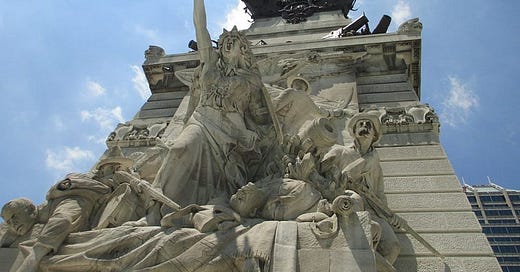Making History a 21st-Century Enterprise
Adapted from Chapter 5 of An AASLH Guide to Making Public History
Adapted from Chapter 5 of An AASLH Guide to Making Public History
In 2008, as our nation grappled with the beginnings of its worst financial crisis since the Great Depression, 2009 AASLH Annual Meeting program chair D. Stephen Elliott (now of the Minnesota Historical Society), host chair John Herbst (Indiana Historical Society), and Garet Livermore (now of The Sagamore Institute of the Adirondacks) drafted the following theme for the meeting:
Our products should be developed, delivered, and marketed with a level of passion and knowledge that makes it meaningful and valuable to visitors, donors, and stakeholders. Cultural entrepreneurship does not end with the fiscal bottom line. It inspires meaningful interaction among visitors, multiple constituencies, and staff; it connects personal history to the larger history of our nation and our world; and it promotes positive social change.

Ultimately, this results in greater public value, the key to the entire equation. As James Heaton of the Tronvig Group notes, “No one buys what you sell. They buy what is of value to them.” A cultural entrepreneur knows to identify audiences and what they value, and develops strategies to discern how his or her organization meets or can be made to meet their needs.
History organizations are still adjusting to the “New Normal” wrought by the economic collapse of almost a decade ago. And while Wall Street’s numbers have rebounded (and exceeded) the highs of the pre-Great Recession era, the need for bigger thinking at history organizations has not waned.
Our use of the term “enterprise” was intentional, and remains so. The history enterprise is the business of history through history institutions: historical societies; museums; historic houses; statewide historical agencies; archives and special collections; historic sites; genealogists; and through the work of academic, public, and avocational historians.
The history enterprise requires innovative entrepreneurs who, according to Bruce W. Dearstyne, “Constantly ask questions that challenge common wisdom and spend a good deal of time thinking about how to change things…. They encourage and support experimenting.” These entrepreneurs, “Constantly seek knew knowledge and have the ability of associating — connecting seemingly unrelated questions, problems or ideas from different fields.” (If it’s not already, Bruce’s book Leading the Historical Enterprise: Strategic Creativity, Planning, and Advocacy for the Digital Age should be on your bookshelf.)
I often comingle leadership with entrepreneurship. Perhaps it’s just that the latter is a very effective tool of the former. Either way, it’s extremely difficult to be entrepreneurial if you don’t feel empowered to take the risks to pursue opportunities beyond resources controlled. Business professor and leadership guru Stewart Friedman maintains that leaders “‘never stop searching for new ways to contribute their talent and energy to causes they believe in. They inspire others to focus energy on the collective good.’” This is the very definition of the cultural entrepreneur.
John W. Durel shared some of his thoughts on this a few years back in an article entitled, “Entrepreneurship in History Organizations.” It is worth revisiting.
I would love to hear of examples of entrepreneurship in your own work and/or organization.
Are you a cultural entrepreneur? Is your organization entrepreneurial? How might you get there if not? What successes have you had that others might build on? What challenges have you overcome?
Please share them with me here.
A twenty-year veteran of the nonprofit world, Bob Beatty is founder of The Lyndhurst Group, a history, museum, and nonprofit consulting firm providing community-focused engagement strategies for institutional planning, organizational assessments, and interpretive direction.



